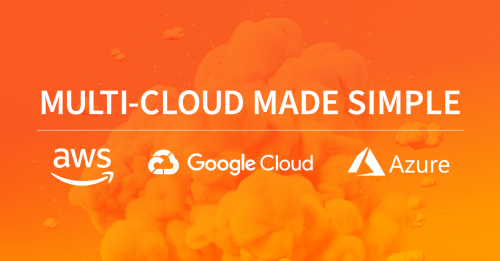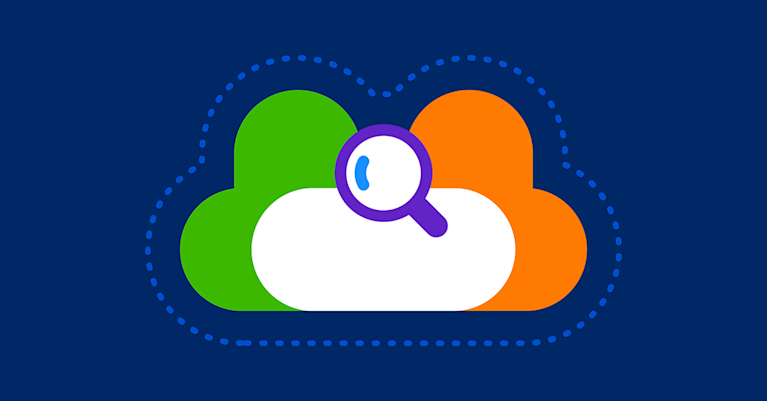Understanding Hybrid Cloud Networking: Architecture, Benefits, and Best Practices
Hybrid cloud networking is part of the new normal in enterprise networks, seamlessly integrating diverse IT environments based both on-premises and in the cloud. Learn about hybrid cloud networking, its architecture, benefits, challenges, and the role of observability platforms like Kentik in streamlining the management and configuration of hybrid cloud environments.
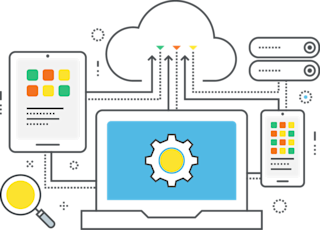
What is Hybrid Cloud Networking?
Hybrid cloud networking is a versatile IT infrastructure that seamlessly integrates on-premises systems with private and public cloud environments. This architecture allows businesses to dynamically manage data and applications across these diverse platforms, enhancing flexibility and scalability. Hybrid cloud networking offers benefits of both control and agility by combining on-premises security with the extensive capabilities of cloud technology.
Benefits of hybrid cloud networking include:
- Data and Application Mobility: Facilitates smooth transitions and operations across different computing environments.
- Scalability and Security: Combines the scalable nature of public clouds with the robust security of private, on-premises infrastructures.
- Resource Optimization: Helps organizations efficiently use their existing infrastructure while accessing the vast resources of public clouds.
Hybrid cloud networking is particularly beneficial for organizations that seek to maintain control over critical data while still reaping the flexibility and cost benefits of cloud computing.
What is Hybrid Cloud Architecture?
Hybrid cloud architecture is the strategic integration of private clouds (e.g., on-premises data centers) and public cloud services designed to ensure seamless data mobility and workload portability between these environments. Hybrid cloud architecture combines private and public clouds to provide businesses with greater flexibility and scalability.
This architecture offers several advantages:
- Data Mobility: By integrating private and public clouds, data can move between them effortlessly. This setup empowers businesses to make data storage or processing decisions based on cost, compliance, or performance metrics.
- Workload Portability: Modern technologies like virtualization platforms (e.g., VMware), container platforms (like Docker), and network virtualization (through VPNs) ensure that applications and services can be deployed, moved, or scaled without being tied to a specific cloud environment.
- Adaptive Deployment: Advanced application deployment strategies, including microservices, APIs, and Kubernetes, allow businesses to deploy applications where they fit best—whether it’s on-premises, in a private cloud, or on a public cloud.
By adopting a hybrid cloud architecture, organizations can dynamically adjust their IT infrastructure based on business needs, technical requirements, or even financial considerations, ensuring they always have the right resources in the right place at the right time.
Hybrid Cloud Networking vs Multicloud Networking
While both hybrid cloud and multicloud strategies utilize multiple cloud environments, their core goals and implementations differ. A hybrid cloud focuses on integrating private and public clouds, while a multicloud approach distributes resources across multiple cloud providers to tap into the diverse strengths of specific public cloud services.
Hybrid Cloud Networking is a strategy that bridges the on-premises and cloud computing worlds. Hybrid cloud networking seamlessly connects an organization’s on-premises infrastructure (often termed a private cloud) to public cloud services. It allows for fluid movement of data and applications between private and public environments. The primary goal is to blend the best of both realms, combining the security and control of on-premises systems with the flexibility and scalability of public clouds.
Multicloud Networking is a strategy that embraces diversification. In a multicloud networking approach, businesses distribute their digital operations across multiple cloud service providers rather than tying their fate to one. This strategy protects against the vulnerabilities of vendor lock-in and exploits the unique advantages each provider brings to the table. It’s all about choice and flexibility.
Hybrid vs Multicloud: Differentiating Factors
Hybrid and multicloud approaches differ in several key ways:
-
Purpose
- Hybrid Cloud is focused on integrating private and public environments to enable data and application mobility. It’s a blend, ensuring businesses can maximize their existing on-premises infrastructure while tapping into public cloud advantages.
- Multicloud is aimed at leveraging multiple cloud providers to access the best features, pricing, and services each offers. It’s about diversification.
-
Integration:
- Hybrid Cloud emphasizes deep integration between private and public cloud components, enabling seamless workload transfers.
- Multicloud architectures imply that a cloud service might operate more independently, emphasizing selecting the best platform for each application or service.
-
Flexibility and Deployment:
- Hybrid Cloud offers flexibility in deployment, allowing businesses to determine where applications live—either on-premises or in the cloud—based on specific requirements like security, compliance, or latency.
- Multicloud provides flexibility in choosing cloud providers, ensuring businesses can harness the strengths of multiple vendors.
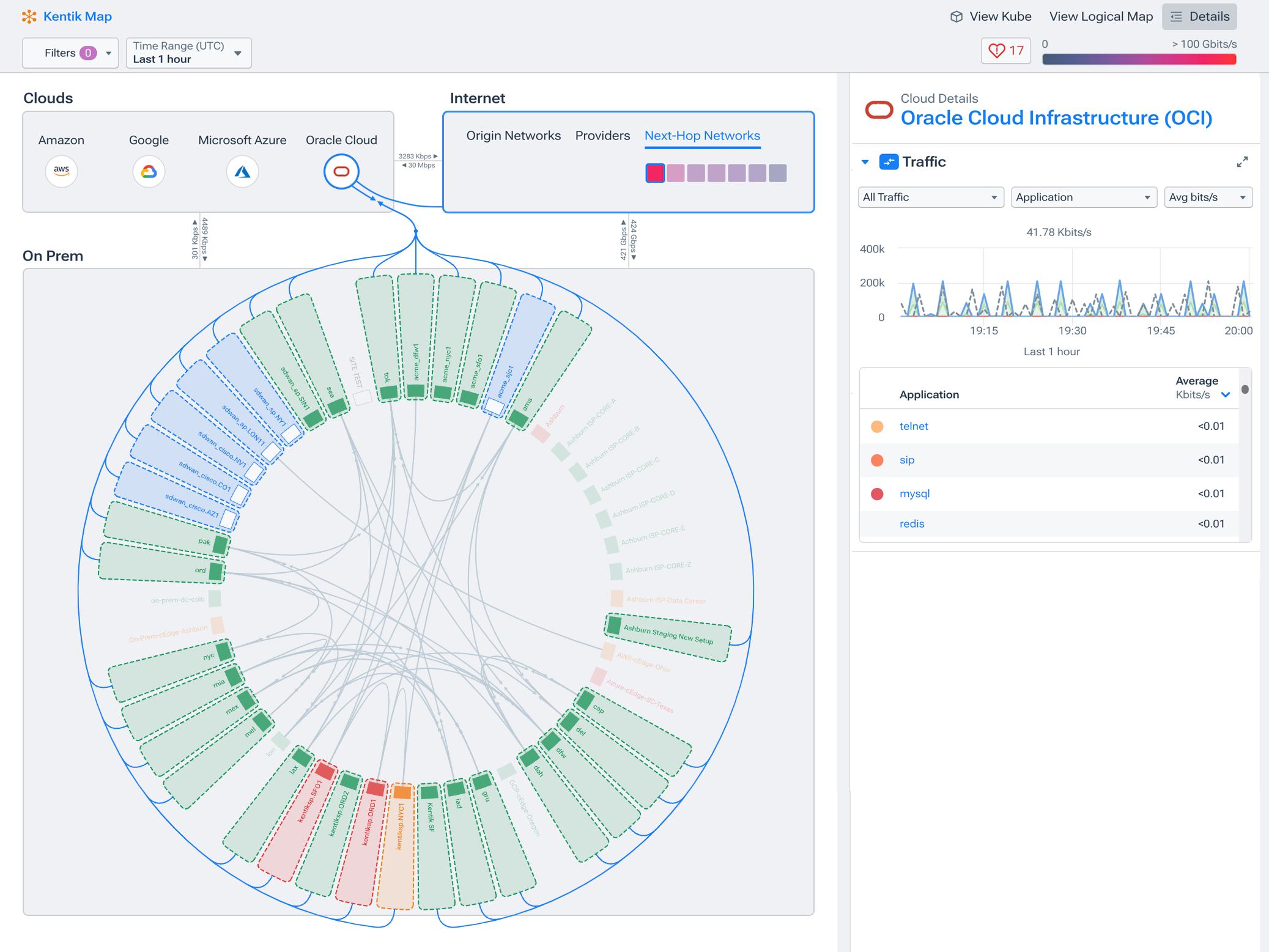
Components of Hybrid Cloud Networking
Hybrid cloud networking is more than just a combination of on-premises and cloud resources. It’s an ecosystem designed for seamless communication, optimized performance, and hardened security. Understanding its components is crucial for businesses aspiring to harness the full potential of a hybrid cloud strategy.
Network Orchestration Between On-Prem and Cloud
Network orchestration is the automated configuration, management, and coordination of complex computer systems, networks, and services. In the hybrid cloud context, this involves ensuring that on-premises and cloud resources talk to each other seamlessly, allowing for real-time data transfer and workload shifts.
Facilitating Connectivity Between Diverse Environments
This refers to establishing and maintaining robust connections between environments such as public clouds, private clouds, and on-premises systems. The goal is to ensure data, applications, and services can traverse these environments without issues.
Virtual Routers, Switches, and Other Network Devices
Just as physical networks rely on routers and switches to direct and manage traffic, hybrid cloud environments utilize their virtual counterparts. These devices control the flow of data and ensure it gets to its intended destination within the hybrid ecosystem.
Cross-Platform Firewalls and Security Services
Security remains paramount in hybrid setups. Cross-platform firewalls monitor and control incoming and outgoing network traffic based on an organization’s security policies. These tools operate seamlessly across on-premises environments and multiple cloud platforms, ensuring a consistent security posture.
Bandwidth Management Across Hybrid Environments
To prevent bottlenecks and ensure smooth data flow, managing bandwidth is essential. This involves allocating and prioritizing bandwidth to different tasks and services, ensuring critical operations get the required resources.
Integration of Content Delivery Networks (CDNs) and VPNs
CDNs optimize web content and service delivery, reducing latency and improving user experience. In a hybrid setup, they ensure that content is delivered efficiently, regardless of where it’s hosted. Virtual Private Networks (VPNs) provide secure communication channels, ensuring that data remains protected as it moves across the hybrid environment.
Advantages of Hybrid Cloud Networking
Hybrid cloud networking blends the strengths of on-premises infrastructure with the versatility of public and private cloud platforms. This fusion offers businesses multiple strategic and operational advantages:
Seamless Integration
One of the primary benefits of hybrid cloud networking is the smooth integration between traditional on-premises systems and dynamic cloud environments. This integration ensures that data and applications move effortlessly, facilitating real-time decision-making and collaboration.
Enhanced Security
Hybrid cloud provides a dual-layered approach to security. With their tried-and-tested security measures, on-premises systems complement the advanced security protocols of cloud platforms. This approach results in a robust security posture, safeguarding sensitive data and business-critical applications.
Cost Efficiency
With the flexibility to use on-premises infrastructure for specific tasks and cloud platforms for scalable operations, businesses can optimize costs. They pay only for the cloud resources they consume, leading to efficient budget allocation.
Improved Control and Flexibility
Hybrid cloud networking gives organizations greater control over their data, allowing them to decide where it resides—on-premises or in the cloud. This flexibility ensures that businesses can adapt to changing requirements swiftly.
Avoiding Vendor Lock-in
By integrating various cloud services, businesses can select the best features from different vendors. This approach reduces dependency on a single provider and ensures that organizations aren’t confined to the limitations of one platform.
Challenges in Hybrid Cloud Networking
While hybrid cloud networking offers many advantages, it’s not without challenges. Recognizing these challenges helps businesses prepare better and navigate the complexities of a hybrid environment:
Hybrid Cloud Complexity
Managing multiple environments, each with its own set of tools, protocols, and interfaces, introduces complexity. Orchestrating workloads, ensuring consistent configurations, and maintaining optimal performance across these diverse platforms can be challenging.
Security Concerns
Ensuring consistent security policies across different platforms is crucialIt is crucial to ensure consistent security policies across different platforms. Introducing multiple cloud platforms can sometimes lead to disparate security protocols, requiring meticulous oversight to maintain a uniform security posture.
Latency Issues
As data travels between on-premises infrastructure and cloud platforms, there’s potential for latency or delays, especially if the systems are geographically distant. This network latency can impact real-time applications and services.
Integration of Legacy Systems
Often, older on-premises systems are only sometimes compatible with modern cloud services. Integrating these legacy systems without compromising functionality or security can be a significant hurdle.
While the hybrid cloud presents its own challenges, its benefits often outweigh the downsides. By understanding both the advantages and challenges, businesses can harness the power of hybrid cloud networking effectively and strategically.
Hybrid Cloud Observability
Observability is essential for understanding complex systems, particularly in hybrid cloud environments. With resources scattered across on-premises infrastructure, private clouds, and multiple public cloud platforms, achieving a consolidated view can be challenging but indispensable.
Visibility in Hybrid Cloud Setups
A hybrid cloud environment is inherently complex. Monitoring performance, rapidly identifying and troubleshooting issues, and making informed resource decisions are crucial. With disparate tools, overwhelming data volume, and potential delays in insight, the hybrid setup demands a streamlined approach to observability.
The New Age of Observability Platforms
The challenges of hybrid cloud observability have given rise to next-generation tools designed specifically for such environments. These platforms:
- Centralize data from diverse sources, offering a unified dashboard for easy access.
- Employ AI and machine learning for efficient data analysis, detecting anomalies and areas of concern.
- Enable real-time insights for timely decision-making and issue resolution.
- Offer in-depth analysis capabilities, letting NetOps teams narrow down problems to specific nodes, applications, or transactions.
Hybrid Cloud Network Observability with Kentik
Kentik offers a robust solution for hybrid and multi-cloud network observability. Here are a few of the ways that the Kentik Network Observability platform helps businesses to navigate, manage, and understand their hybrid cloud networks.
You can learn more about how Kentik enables hybrid cloud observability in this short video where we explore how Kentik’s unified platform provides NetOps professionals with comprehensive visibility across hybrid and multicloud landscapes. Learn how Kentik ingests and visualizes data from various sources including public clouds, SaaS providers, private data centers, and more. See how you can drill down from a high-level overview to granular details such as specific IP addresses, VPC traffic, and performance metrics:
Comprehensive Visibility
Kentik offers a comprehensive view of hybrid cloud connectivity and health. Its features include:
- Infrastructure Visualization: A dynamic map that spans traditional data centers to leading cloud providers, providing an interactive overview.
- Automated Source of Truth: Provides a representation of your cloud resource topology, detailing interconnects with data center environments.

Proactive Alerts & Insights
Kentik’s proactive alerting system keeps potential issues at bay by:
- Offering customizable alerts tailored to specific business requirements.
- Providing detailed network traffic analyses to maintain data sovereignty and inter-region data compliance.
- Automatically flagging any communication with watchlisted hosts.
Connectivity Checker
Kentik’s Connectivity Checker is essential for real-time troubleshooting of hybrid cloud connectivity, offering:
- Live connectivity insights on-demand.
- Detailed visualizations pinpointing connectivity blockages.
- Swift search capabilities to address connectivity concerns.
Hybrid Cloud Performance Monitoring
Kentik ensures optimal public cloud performance with:
- The Kentik “State of the Internet” feature tracks latency and potential outages across cloud providers.
- Real-time SaaS status checks and synthetic tests for upstream services.
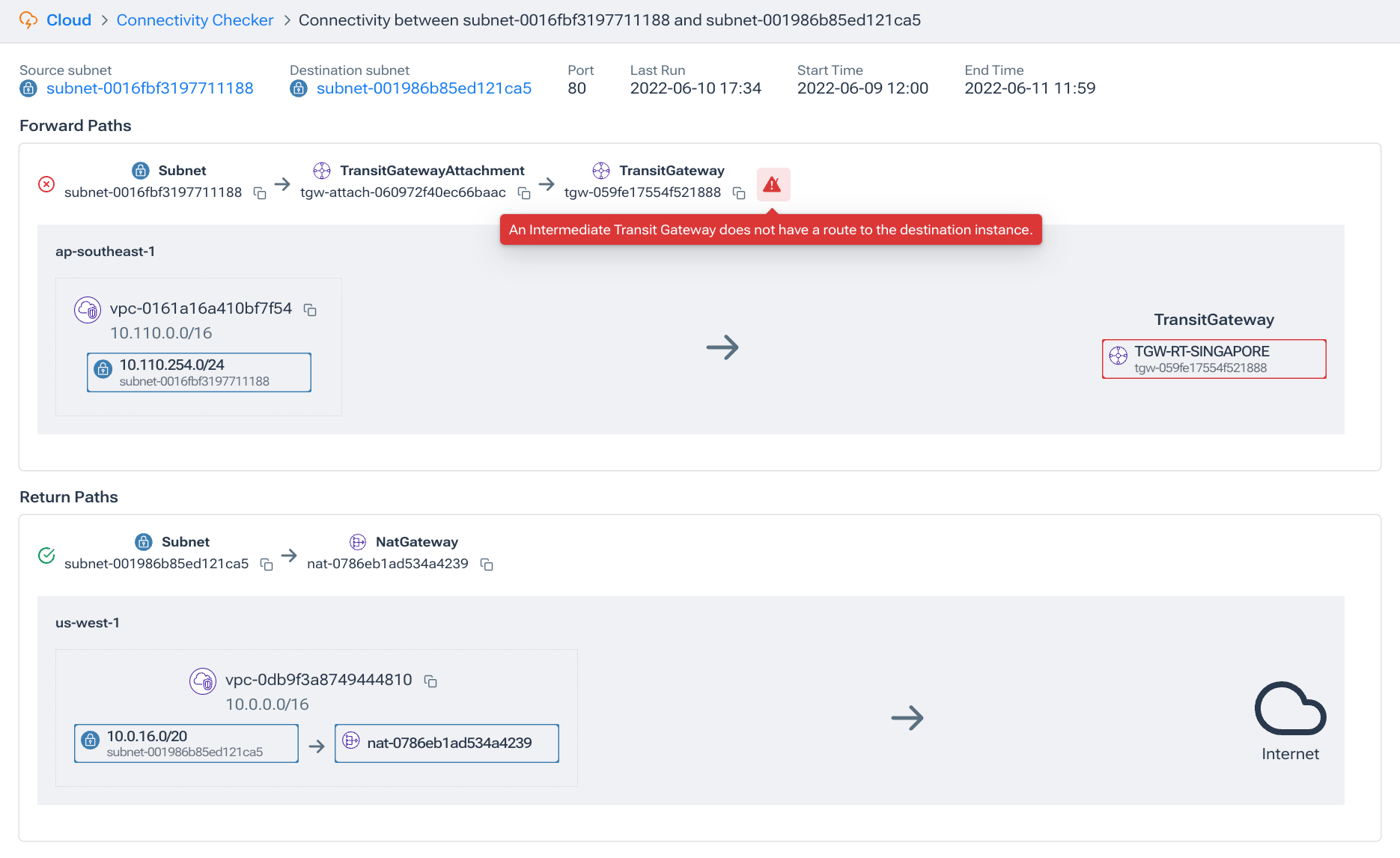
Ensure Cloud Migration Excellence
Kentik streamlines the cloud migration process by:
- Offering insights for enhanced user experiences.
- Analyzing cloud usage trends to help optimize cloud capacity, eliminate redundancy, and reduce cloud costs.
- Balancing performance and cost based on traffic patterns during migration.

Data Explorer:
Kentik’s Data Explorer lets NetOps professionals drill down into network data, providing:
- Rapid queries address both known and unknown issues.
- Real-time and historical data give a holistic view of connectivity and performance.
- Data enrichment to augment your organization’s data with relevant context.
Hybrid Cloud Networking Takeaways
Hybrid cloud networks:
- Span multiple environments, from on-premises infrastructure to various cloud platforms.
- Offer comprehensive solutions tailored for seamless integration.
- Provide on-demand resources, enabling businesses to adapt dynamically.
- Can be managed in-house or by third-party specialists.
- Are enhanced with next-generation hybrid cloud observability platforms like Kentik.
Achieving Hybrid Cloud Excellence with Kentik
Kentik Cloud collects, analyzes, and contextualizes traffic flow and performance data from all major public clouds –- from Microsoft Azure, Google Cloud, Amazon Web Services (AWS), and Oracle Cloud Infrastructure services – along with data from on-premises networks. Kentik enriches all this hybrid cloud network telemetry with deep application, business, and security context to provide observability across all hybrid cloud and multicloud environments.
The Kentik Network Observability Platform enables the collection, analysis, and visualization of flow logs generated on AWS Transit Gateways, as well as the automatic visualization of detailed Google Cloud, Microsoft Azure and hybrid cloud infrastructure topologies. These capabilities enable network, cloud, and infrastructure teams to quickly troubleshoot and understand hybrid cloud traffic, future-proofing their organizations against the increasing network complexity associated with cloud adoption.
Kentik’s advanced network observability solutions are designed for today’s complex, hybrid cloud and multicloud network environments. Kentik’s network monitoring solution addresses all three pillars of modern network monitoring, delivering visibility into network flow, powerful synthetic testing capabilities, and Kentik NMS, the next-generation network monitoring system.
Kentik provides the tools and insights necessary for a seamless, secure, and optimized hybrid cloud experience. Learn more about Kentik’s solutions for hybrid cloud monitoring, or experience them for yourself: Start a free trial or request a personalized demo today to learn how Kentik can aid your organization’s hybrid cloud journey.
Related Hybrid Cloud Networking Topics
- Kentik Blog: Multi-Cloud Made Simple: Announcing Kentik Observability Enhancements for AWS and Google Cloud
- Kentik Blog: Announcing Complete Azure Observability for Kentik Cloud
- Kentik Blog: Multi-cloud vs. hybrid cloud networks: What’s the difference?
- Kentik Blog: Kentik Bridges the Intelligence Gap for Hybrid Cloud Networks
- Kentipedia entry: What is Cloud Networking?
- Kentipedia entry: Multicloud Networking

